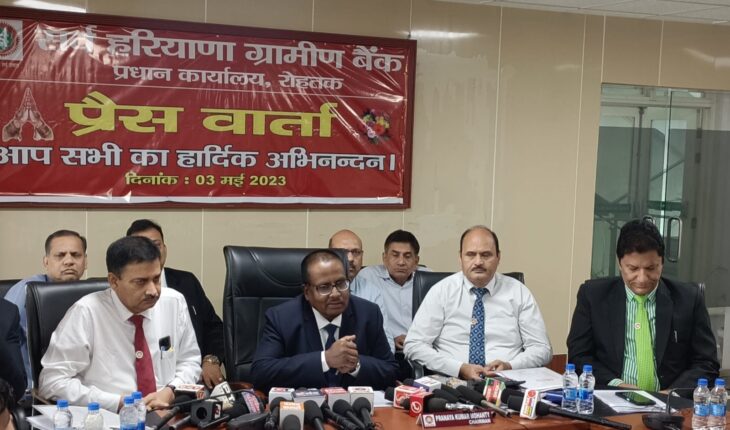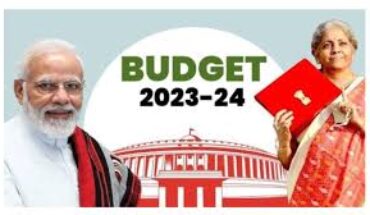
Those were the days when the rural people, especially the farmers and agricultural labourers, were feeling hesitant even to enter the doors of commercial banks despite their nationalization. Smelling the essence of the ground reality, the then Indira Gandhi government decided to set up such banks whose entry doors always remain open for this neglected segment of the society.
So, the Regional Rural Banks (RRBs) were established under the provisions of an ordinance passed on 26 September 1975 and the RRB Act 1976 to provide sufficient banking and credit facility for agriculture and other rural sectors. As a result, five RRBs were set up on 2nd October 1975 on the recommendations of the Narsimhan Committee on Rural Credit, during the tenure of Indira Gandhi’s government. The purpose was to include rural areas into the economic mainstream since around 70% of the Indian population was rural.
Prathama Bank, with head office in Moradabad, Uttar Pradesh was the first RRB. The other four RRBs were Gaur Gramin Bank, Gorakhpur Kshetriya Gramin Bank, Haryana Kshetriya Gramin Bank, and Jaipur-Nagaur Anchalik Gramin Bank. These RRBs were owned by the central government, the sponsoring bank and the state government, with 50%, 35%, and 15% shareholding respectively.
But as these RRBs were restricted to finance the priority sector only, the low interest earning sector, some of these banks slipped into the red zone and became non-viable. To bring these banks out of the red ditch, the central government in 1991 decided to allow them for financing under non-Priority sector umbrella also. Despite this step, some RRBs were still facing the closure risk, so the GOI started merger of small RRBs to make viable big entities and almost all such banks were merged to make state level RRBs, except in some bigger states, reducing their present number to 43 against previous number 196. Now most of these RRBs are not only earning larger profits, but also competing with their counterpart Nationalised banks.
If we take up the study case of Haryana’s only RRB- Sarva Haryana Gramin Bank, despite all headwinds – crop loss due to untimely heavy rains & hailstorms in the state, audited business figures of FY 2022-23 show that Bank’s operating profit has increased from Rs. 392.76 Cr to Rs. 569.24 Cr with a growth of 44.93% and Net Profit has increased from Rs. 140.73 Cr to Rs. 275.53 Cr with a growth of 95.78%.
While addressing a press conference on Wednesday at Rohtak, Pranaya Kumar Mohanty, Chairman of the bank informed that the bank has achieved its targets under all the major parameters i.e. deposits, advances, NPA reduction and profit.
Highlighting the important business figures, he said that bank’s total business has increased from Rs. 30369 Cr to Rs. 34112 Cr with growth of 12.32% over previous year. Total deposits have increased from Rs. 18534 Cr to Rs. 20555 Cr with a growth of 10.90%. Similarly, loans & advances have increased from Rs. 11835 Cr to Rs. 13557 Cr showing growth of 14.55%. Bank’s Gross NPA has decreased from 7.19% of last year to 4.29% and Net NPA is nil. Bank’s operating profit has increased from Rs. 392.76 Cr to Rs. 569.24 Cr with a growth of 44.93% and Net Profit has increased from Rs. 140.73 Cr to Rs. 275.53 Cr with a growth of 95.78%. The CRAR of the bank is 14.17%.
Mohanty also shared the targets of the next year. He said that they have fixed target of total business of Rs. 40000 Cr for the year 2023-24 out of which target of Total deposits is Rs. 24000 Cr and Loans & Advances is Rs. 16000 Cr. Gross NPA of the bank is to be brought down to 2.5%. More emphasis will be laid on increasing Retail and MSME loans along with Agricultural loans.
Talking about technological aspects, Mohanty said that their bank is providing services such as ATM, Mobile Banking, RTGS, NEFT etc. to all its customers through 680 branches and 1241 BC Banking Outlets using latest technology like other public and private sector banks so that the customers can transfer funds and pay bills etc. without visiting the bank’s branches. He also said that the bank is going to start Internet Banking service very soon.
A retiree of RRB alleges that GOI and RBI are playing double standards in allowing the RRBs and Commercial banks to finance under non-priority sector, which plays a major role in profit making of the bank.
As still the Government of India and RBI are curtailing the scope of profit making by the RRBs through guidelines of mandatory Priority Sector Lending (lesser rate of interest loans) as minimum 75% of total loans. RRBs are forced to lend non-priority sector loans (High interest earning loans) maximum upto 25% of their total loan portfolio. Whereas the commercial banks, mandatory primary sector lending is 40%, leaving behind the scope of financing higher interest rate loans (non-priority sector loans) upto 60% of their portfolio.
As per RBI Master Directions – Priority Sector Lending (PSL) – Targets and Classification (Updated as on October 20, 2022), Total mandatory Priority Sector lending for Commercial banks is 40 per cent of ANBC and 75 per cent of ANBC for RRBs. For the purpose of priority sector lending, Computation of Adjusted Net Bank Credit (ANBC), where ANBC denotes the outstanding Bank Credit in India. Will the GOI & RBI look into the matter?





